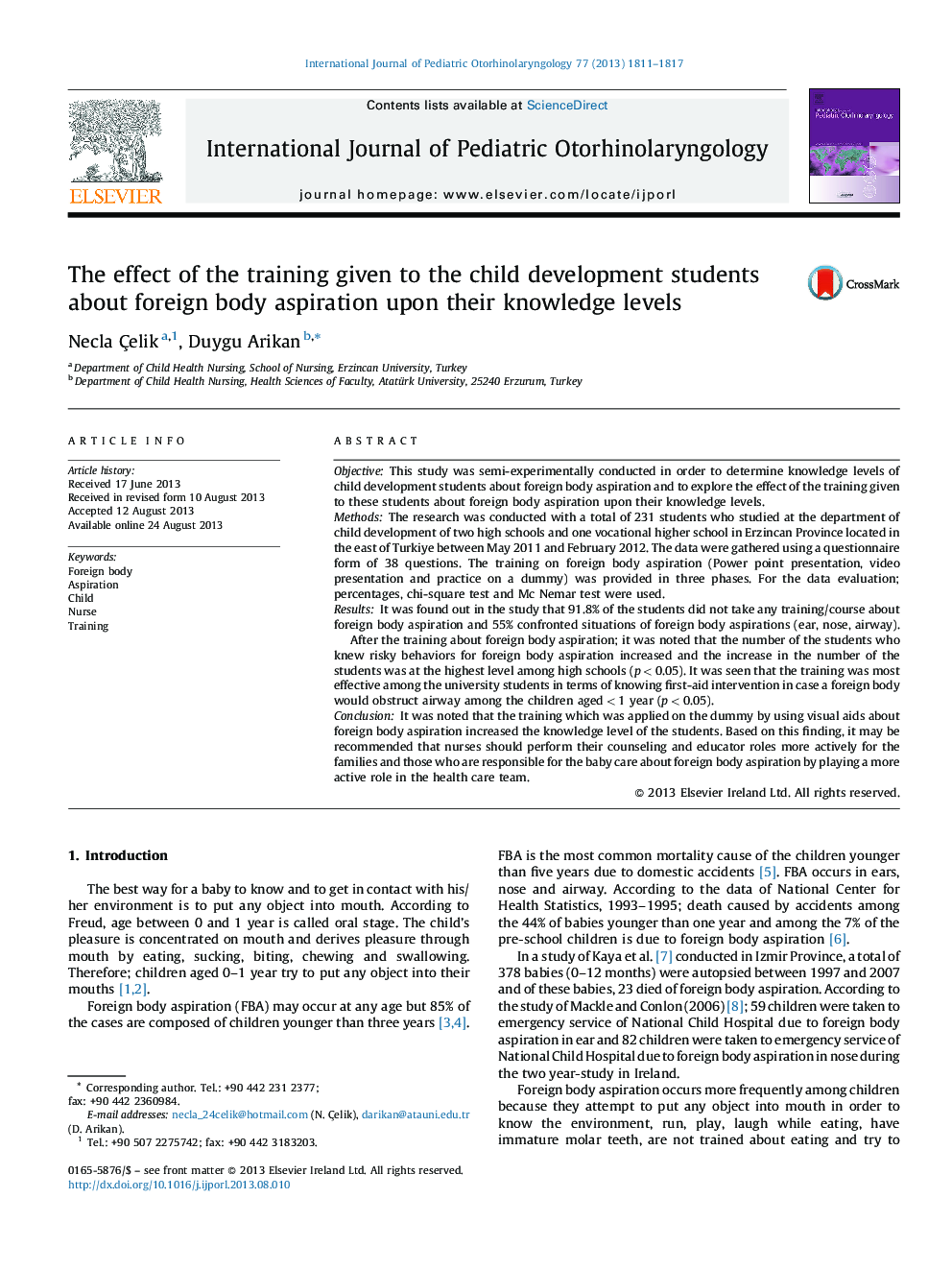| کد مقاله | کد نشریه | سال انتشار | مقاله انگلیسی | نسخه تمام متن |
|---|---|---|---|---|
| 6213947 | 1606014 | 2013 | 7 صفحه PDF | دانلود رایگان |
ObjectiveThis study was semi-experimentally conducted in order to determine knowledge levels of child development students about foreign body aspiration and to explore the effect of the training given to these students about foreign body aspiration upon their knowledge levels.MethodsThe research was conducted with a total of 231 students who studied at the department of child development of two high schools and one vocational higher school in Erzincan Province located in the east of Turkiye between May 2011 and February 2012. The data were gathered using a questionnaire form of 38 questions. The training on foreign body aspiration (Power point presentation, video presentation and practice on a dummy) was provided in three phases. For the data evaluation; percentages, chi-square test and Mc Nemar test were used.ResultsIt was found out in the study that 91.8% of the students did not take any training/course about foreign body aspiration and 55% confronted situations of foreign body aspirations (ear, nose, airway).After the training about foreign body aspiration; it was noted that the number of the students who knew risky behaviors for foreign body aspiration increased and the increase in the number of the students was at the highest level among high schools (p < 0.05). It was seen that the training was most effective among the university students in terms of knowing first-aid intervention in case a foreign body would obstruct airway among the children aged < 1 year (p < 0.05).ConclusionIt was noted that the training which was applied on the dummy by using visual aids about foreign body aspiration increased the knowledge level of the students. Based on this finding, it may be recommended that nurses should perform their counseling and educator roles more actively for the families and those who are responsible for the baby care about foreign body aspiration by playing a more active role in the health care team.
Journal: International Journal of Pediatric Otorhinolaryngology - Volume 77, Issue 11, November 2013, Pages 1811-1817
